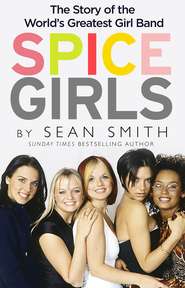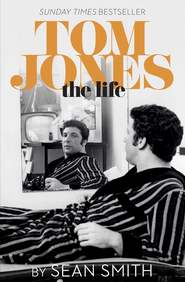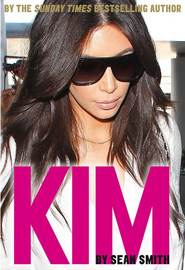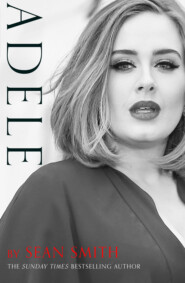По всем вопросам обращайтесь на: info@litportal.ru
(©) 2003-2024.
✖
Ed Sheeran
Настройки чтения
Размер шрифта
Высота строк
Поля
This was not a holiday for Ed, although he and his father managed to fit in a boat trip to Ailsa Craig, the famous granite island in the Firth of Clyde. Preston was impressed by Ed’s work ethic, unusual in one so young: ‘He was intelligent and quick; he very quickly picked up the things he had come up to learn. Even at fourteen, you could tell he had a real determination and ambition.’
The trip was made more memorable for Ed by the presence of the only other student on the trip, an amazing guitar player from Oklahoma called Jocelyn Celaya, who would develop a strong following in subsequent years as Radical Classical. Jocelyn had arrived with her boyfriend, who told everyone that he used to be a gangster in Mexico. Ed, who was enthusiastic about gangsta rap at the time, couldn’t believe he was face to face with a real one and bombarded him with questions. On the last night, everyone got together for a party and Preston played some of his own compositions including ‘Fat Boy’, ‘Metal’ and ‘Ladies Night’. Ed entertained everyone by making up rap lyrics to accompany the music. ‘He just rattled it off,’ recalled Preston. ‘It was quite funny and impressive as well.’
On his return to Framlingham, Ed was not about to become the second Preston Reed but the interlude helped him view the acoustic guitar as more than just a stringed instrument. Preston’s technical innovations showed him ‘the music you could make using the guitar as a source of sounds’. Ed absorbed that lesson from his trip to Scotland and would use it in his own way when he was introduced to an even more important character in his development as a performer.
But, first, he had to go back to school. Ed was fortunate in that it wasn’t just his mum and dad who recognised he had a special talent and could make something of his music. The director of music at Thomas Mills, Richard Hanley, realised early on that the teenager was different from his other students and needed a more thoughtful approach. Richard specialised in classical music and was more closely involved with teaching Matthew, but he followed the headmaster’s lead and gave all his students the opportunity to flourish. That was the key for Ed, who has always acknowledged the debt he owes his school.
At first, Richard was hoping to persuade Ed to follow his brother and join the school orchestra, but soon discovered he was persevering with the cello on sufferance. Ed was relieved to give it up and concentrate on the guitar. He could often be found in one of the small practice rooms in the music department working on a new song. Richard explains, ‘I think the school gave him the chance to be creative, to have the time and space to play and compose and perform.’ His passion for his music was all-consuming.
Ed was never going to match Matthew’s academic dedication. Even Imogen acknowledged that her younger son was not an exam person and struggled to apply himself to read music properly. In many ways, though, Matthew was the more eccentric of the two talented brothers. Richard acknowledges that Matthew was very creative as well as academic: ‘He had some quite avant-garde ideas.’ One Easter he composed ‘Broken Pavements’ for the school concert at St Michael’s: ‘It was a very atmospheric piece. I can still remember the sunlight pouring through the great east window at the church illuminating the players. It was a magical moment.’
As teenagers, the two Sheeran boys were totally different. They had their own groups of friends and just did their own thing. For a time, Keith Krykant taught Matthew as well: ‘He particularly wanted to know about jazz improvisations. He was very mathematical in his music and was very interested in theory. He wanted to know how the notes added up mathematically to give a certain chord.
‘He wanted to consolidate some of the things he was doing on the piano and understand how they related to the guitar. He used to compose on a computer and had a much more mechanical approach to that than Ed, who was more interested in getting a song out with a rhythm and a melody.’ In his own way, Matthew was just as ambitious as Ed: he wanted to establish himself as a classical composer. The two boys never fell out but, as Keith remembers with a smile, ‘They never used to speak to each other in the house.’
Keith was still trying to teach Ed some music theory but he was fighting a losing battle. Every week he would arrive at the house with a careful plan for the lesson with ‘Edward’ – as he always called him, just as his parents did. He explains, ‘I would decide that we would take a piece of music – pure music notation – and I would explain to him how we would get that on to a guitar. It is quite tedious. And we maybe would get five minutes into the theory and he wasn’t really interested in it. He would suddenly say, “Oh, Keith, do you want to hear a song that I wrote last night at one o’clock in the morning?” And I would say, “OK.” So he would start playing this song. And ask me, you know, “What do you think of this?” And I might suggest that he put something extra in just to bridge the chords – harmony, if you like. And if he liked it, he would light up and go, “Wow, that really works now. Keith, you’re a genius!”’
Ed was showing great maturity for his age in what he was listening to and what he wanted to play. His father’s taste had rubbed off on him. He still wanted to enjoy his favourite hip-hop artists but, post Damien Rice, he was developing more interest in singer–songwriters such as Ray LaMontagne, whose debut album, Trouble, in 2004, had showcased his distinctive vocal style, as well as all-time greats, including Paul Simon. He spent an entire lesson with Keith learning how to play the famous Simon and Garfunkel hit ‘Sound of Silence’.
‘You could see that he liked songs with strong melodies,’ observes Keith. ‘Most of the kids at the time were listening to The X Factor, which had just started, and following that, but he was appreciating other things.’
Another of Ed’s characteristics that served him well as a teenager was his lack of fear. He was appreciative but not overawed by the occasion. He took meeting Preston Reed in his stride. On another memorable occasion John and Imogen had arranged a dinner party where the guests included the local vicar. Keith and his wife were there: ‘Edward sang a ballad in the front room in front of the vicar and everybody else in a very, very confident and emotional way. It was very mature because he was only fourteen. It was extraordinary. Most of the children I teach won’t ever sing or play in front of their mum and dad. In fact they will play in front of anyone else but their mum and dad. But his mum and dad were there and he sang this song and completely held the audience – except the vicar, who can’t stand guitar music.’
The priest might not have appreciated being in the audience for a concert at the Shepherd’s Bush Empire in January 2006. The modest Sunday-night gig would change the course of Ed’s life as a performer. He and his dad had driven to London to see Nizlopi, an unconventional duo who had just had a number-one hit with their ‘JCB Song’. He was transfixed, though, by the opening act, an Irish singer–songwriter called Gary Dunne.
Gary used a Boss Loop Station and it was the first time Ed had witnessed how exciting that could be live. Gary built a song that filled the popular venue even though he was alone. He performed five numbers finishing with his ‘Amerikan Folk Song’, which Ed singled out as the track that had made him realise looping was the way forward for him to create his own individual sound. The musician plays a few bars, then has the loop station play it back while he lays another set of chords over the top. This can be done multiple times building layers of sound. In other words, you become your own band.
Gary did his best at performing the often thankless task of being a supporting act when the audience were standing around chatting and having a pint. He made a point of plugging his album, Twenty Twenty Fiction, which was on sale at the merchandise desk in the foyer. He also announced that he did house concerts, if anyone was interested.
Ed couldn’t stop talking to his dad about the loop pedal so John wrote to Gary saying, ‘My son absolutely loved what you did,’ and inviting him to Framlingham for Ed’s fifteenth-birthday party in a few weeks’ time.
‘House concerts’ were part of Gary’s musical world. They enabled him to earn extra pennies when he was between tours, further spread the word about his music and hopefully sell some CDs. He quoted John his standard deal at the time: ‘It was accommodation, a few hundred quid and a six-pack of Guinness. They were simple times.’
The week before his birthday, there was a tragic turn of events. One of his school friends, Stuart Dines, was killed in an horrific coach crash in Germany. Stuart, who was three months younger than Ed, was one of a group of pupils from Thomas Mills on a half-term trip to the Austrian ski resort of Fugen. On the autobahn near Cologne, the double-decker coach got a puncture and had to pull over onto the hard shoulder. A lorry carrying metal rods careered into the stationary vehicle.
Stuart was killed when a piece of metal from the lorry smashed through one of the coach windows.
Ed was not on the trip, but he knew Stuart well and they had been round to each other’s houses. Stuart lived in the nearby town of Woodbridge and his elder brother and sister went to school there. His parents, however, chose Thomas Mills for Stuart because he had ADHD and they felt it would better suit their son. That proved to be the case and, just like Ed, he was a happy and popular classmate and not at all an outsider. His proud father Robert recalls, ‘Stuart was very outgoing and if anyone was a bit shy, they could latch on to Stuart. He would talk to anybody. He had so much energy.’ He also shared Ed’s gift of being able to memorise complicated lyrics, which would leave his father wondering why he couldn’t do the same with his schoolwork.
The school flag was at half mast when everyone returned after half-term. The headmaster at the time, Colin Hirst, who had faced the difficult task of telling Stuart’s parents what had happened, said that the children were ‘devastated and shocked’.
Stuart’s father Robert remembers, ‘Ed was very, very upset, like a lot of the children.’
Ed had to come to terms with the death of someone he saw practically every day. He resolved to write a song about his feelings. He composed, he said, ‘whilst I got round to actually accepting it.’
The song that he eventually finished is a breathtakingly beautiful tribute to his friend called ‘We Are’. He completed it in time for Stuart’s funeral at Woodbridge Methodist Church and the CD recording was played during the service along with some of Stuart’s favourite Queen records. So many people wanted to pay their respects that they filled the church and the hall next door, into which they piped the music so that everyone could hear it. Afterwards Ed presented Robert, and Stuart’s mother Jackie, with a signed copy of the CD. ‘It is a lovely song,’ observes Robert.
Before the funeral, Ed’s fifteenth birthday party was a chance to cheer himself up, as well as his friends. Ed went to a lot of trouble setting up a PA system in the spacious living room at home and he and his dad drove off to Ipswich Station to collect Gary. This was the first time they had met him. Gary played a hugely appreciated set of his songs to ‘Ed and all his teenage buddies, who told me they loved the show’.
He stayed up late talking with John and Ed and a few of his mates. They reminisced about Ireland. Gary is from Portlaoise, fifty miles west of Dublin. His father, also called John, ran a folk club at Kavanagh’s pub, which hosted many of the musicians Ed most admired, including Andy Irvine, an original member of Planxty. Gary still has the picture of Andy, his father and a teenage Ed taken there.
Most of the country had seen a loop pedal for the first time when the Scottish singer–songwriter KT Tunstall used one to mesmerising effect on a 2004 edition of Later … with Jools Holland. She stole the show when she created a one-woman-band effect for her song ‘Black Horse and the Cherry Tree’. But Gary had first become interested in looping two years earlier when he had played at the Lobby Bar, a music pub in Cork. He was on a bill that included the acclaimed American singer–songwriter Joseph Arthur and could scarcely believe Joseph wasn’t using a backing track. Gary had marvelled at how he could make all those sounds live through a loop station. The music business is full of such chance connections. That gig in a tiny bar in Cork would lead indirectly to one of the most important ingredients in the development of the Ed Sheeran sound.
By coincidence both Gary Dunne and Damien Rice had supported Joseph Arthur at one time. Ed was thrilled to hear that Gary had also opened for Damien Rice on tour and told him about the gig at Whelan’s he had been to with his cousin Laura. Gary observes, ‘He was a hardcore Damien Rice fan back then.’
Gary found meeting the Sheeran family a ‘very warm and enjoyable’ experience: ‘In the morning Imogen cooked a big, beautiful fry-up and we went for a walk near by.’ Before he left Framlingham, Gary went through the process of looping with Ed. He showed him the Boss RC20 model he used and recommended that Ed try it. It was a simple but rugged piece of equipment that could survive being hauled around by an impatient teenager.
Ed went straight out and bought one, which cost roughly £250. Looping was not a technique you could learn overnight and it took him well over two years of constant practice to feel that he had finally mastered the pedal – he soon found that one mistake could throw a whole song out of synch. The new skill, however, did allow him to improve ‘We Are’ and turn it into a multi-layered ballad, recognisable as the one he would perform many times in the future.
Gary was happy to offer advice by phone or email and they remained on very good terms. It was a two-way street: Ed had videoed Gary’s gig at his house, chopped it into individual songs and put the entire thing on Gary’s Myspace page.
Ed was of the generation that appreciated the power of a good live video online. Gary observes, ‘I was ten years older and just didn’t understand at the time. He was so digital savvy and web savvy in a way that I wasn’t and I wasn’t really interested in. I remember him telling me, “You’ve got to get out there.” He kind of ran my Myspace for six months.’
Gary and Ed never composed together. He explains, ‘Our connection isn’t about songs. It’s about live looping. I suppose I passed on a craft to him, a way of making music. Of course, he has since evolved massively but the craft remains the same. He is just using it in a much more complex way than I ever did.
‘Looping is like playing a different instrument. It’s not just getting onstage with a guitar and singing a song. It’s getting onstage with your voice and your guitar and creating a sound. You are using a different canvas.’
Gary is proud of his part in Ed’s journey to global success: ‘When I sit in an audience of 80,000 people and I see Ed do his thing with an acoustic guitar and a loop station, I can hear a little DNA of where he and I connected. It’s a beautiful, beautiful thing.’
6
Want Some Nizlopi (#ulink_bd186656-a516-581c-a05a-336372abab8f)
As soon as his voice broke, Ed’s vocals improved dramatically. The time was right for him to have some lessons. He struck lucky with Claire Weston, a Framlingham-based singer and one of the best-known sopranos in Suffolk. She had been a leading light of the English National Opera before settling back in her home county to teach at Framlingham College and Woodbridge School. She also took on pupils from Thomas Mills.
Claire’s favourite piece of music is Verdi’s Requiem, although she is very partial to Benjamin Britten as well. Neither composer featured on Ed’s mixed tapes but she also admitted a liking for The Beatles, a connection shared by many of the players in Ed’s journey. Under her expert guidance, Ed’s singing began to resemble the familiar style of the future. Still a little shaky in places, he sounded more like the Ed Sheeran on his next CD venture, an album he called simply Ed Sheeran. The title may seem uninspired but it followed a long-established method in the music business of getting your name in front of the public.
The music revealed a gentler, more thoughtful Ed. He had discovered that he wrote in waves so most of the songs for Ed Sheeran have a similar feel. They were pleasant without having the extra ingredient that grabbed you by the throat. He was in proper singer–songwriter territory, with a series of considered ballads including the poignant ‘In Memory’ and ‘The Sea’, which reflected a more serious-minded teenager.
In the 1970s this album might have been considered bedsit music – introspective tracks that you would put on the stereo, lie on the bed, gaze at the ceiling and consider the injustice of the world. Fittingly, on one of the catchiest tracks, ‘Spark’, he says the world is harsh and he is ‘stuck in the dark’.
He highlighted his change of mood from Spinning Man and The Orange Room by calling one of the tracks ‘Quiet Ballad of Ed’. The ‘moody’ song had been banished to history. The lyrics are more mature, although his vocals still sound young. He didn’t completely forget his earlier teenage self: the guitar in ‘Billy Ruskin’ is very reminiscent of his old favourite ‘Sweet Child of Mine’.
Perhaps the most interesting track is ‘Pause’, which fused rap and melody, as so much of his music would in the future. The rap was provided by his cousin Jethro, whose verse – including a name check to Sheeran Lock – fits snugly into a catchy song that included one of Ed’s anthem-like choruses.
The next step in the musical education of Ed Sheeran was to make his first video. He went along to Bruizer Creative Film & Video Agency in nearby Woodbridge to make a film to accompany him singing the opening number on the album, ‘Open Your Ears’, which, unusually for Ed at the time, featured a piano melody as well as backing vocals from his cousin Laura. She’s not in the video, which showed Ed, in a red Nizlopi T-shirt and smart black blazer, gazing upwards at a camera. The whole three minutes is filmed from above with Ed, looking very clean cut with neatly brushed hair, against a spinning backdrop – a spinning man. He is standing on a black paw print, which he had adopted as his new logo and featured on the front of the CD cover. He may have got the idea from the family cat or from the sign by the roadside outside Framlingham for the Earl Soham Veterinary Centre.
The overall effect is inoffensive, but neither the song nor the video hinted at the artist Ed Sheeran would become. He is definitely a work in progress, although it reflected the mindset in the Sheeran household. Keith Krykant, who continued to be impressed with how they went about achieving their goals, observes, ‘His parents took Ed very seriously. Because of their background in media and promotion, they were already treating Ed like a celebrity – quite extraordinary really.’
Part of the necessary process of celebrity was to take Ed out of his comfort zone in Framlingham and into the wider world. He continued to hope that contact with Nizlopi would prove the answer. They were firmly established as his favourite band but he was having no luck in engaging their attention. Ed was among the collection of fans known as the People’s Republic of Nizlopi, who knew the words to every song. Damien Rice was not forgotten, but Ed wanted to meet the duo from Royal Leamington Spa who offered so much more than one hit record. While he was enthusiastic about Gary Dunne’s looping at the Shepherd’s Bush Empire, Nizlopi moved him. He was spellbound by the way they engaged with the audience and made everyone at the venue feel involved.
Nizlopi were two old school friends – Luke Concannon, who sang and played guitar, and John Parker, a beatboxer and double bassist. Like Ed, they both have strong Irish connections. John’s mother is Irish and Luke’s grandparents were from Kerry and Roscommon, while his dad, Kieron, is an accomplished musician and keen piper. The boys grew up playing in folk-music sessions and festivals, singing in pubs and busking in Ireland. Luke explains, ‘It was very relatable for Ed. Our families are really quite similar.’
They also had a musical heritage that Ed could appreciate: ‘We had two strands of musical influence. We had the singalong stuff like The Beatles that we used to hear and play in pubs in England, as well as having some rare old times in Dublin. But alongside that, there was also this thing about being a modern young person listening to and playing hip hop. We had to figure out what our music was and so we called it folk hip hop.’
Their background was almost identical to Ed’s. He, too, had absorbed the classic Beatles tracks his dad played in the car, loved Planxty and The Chieftains during his trips to Ireland and had embraced the music of Eminem and Dr Dre. Later, when Ed would describe his own sound, he called it ‘acoustic hip hop’.
Luke and John needed to find a name for themselves. One afternoon they were sitting with their then band in the kitchen at Luke’s home when his mum mentioned to her son that a family friend, Di Nizlopi, was popping around on Sunday. One of the band misheard and asked ‘What’s a dinizlopi?’ thinking it was some weird dinosaur. Everybody laughed, and there and then they decided to call themselves Nizlopi, a Hungarian name. Luke liked the idea in particular because he had a ‘lust’ for the family’s daughter, Nina.










